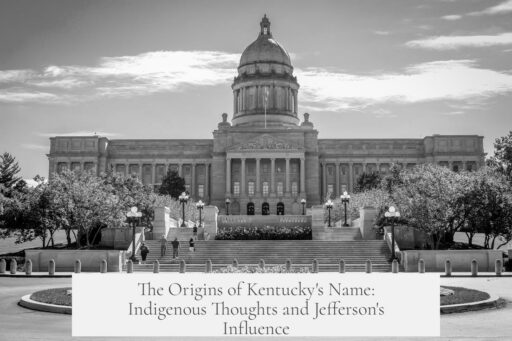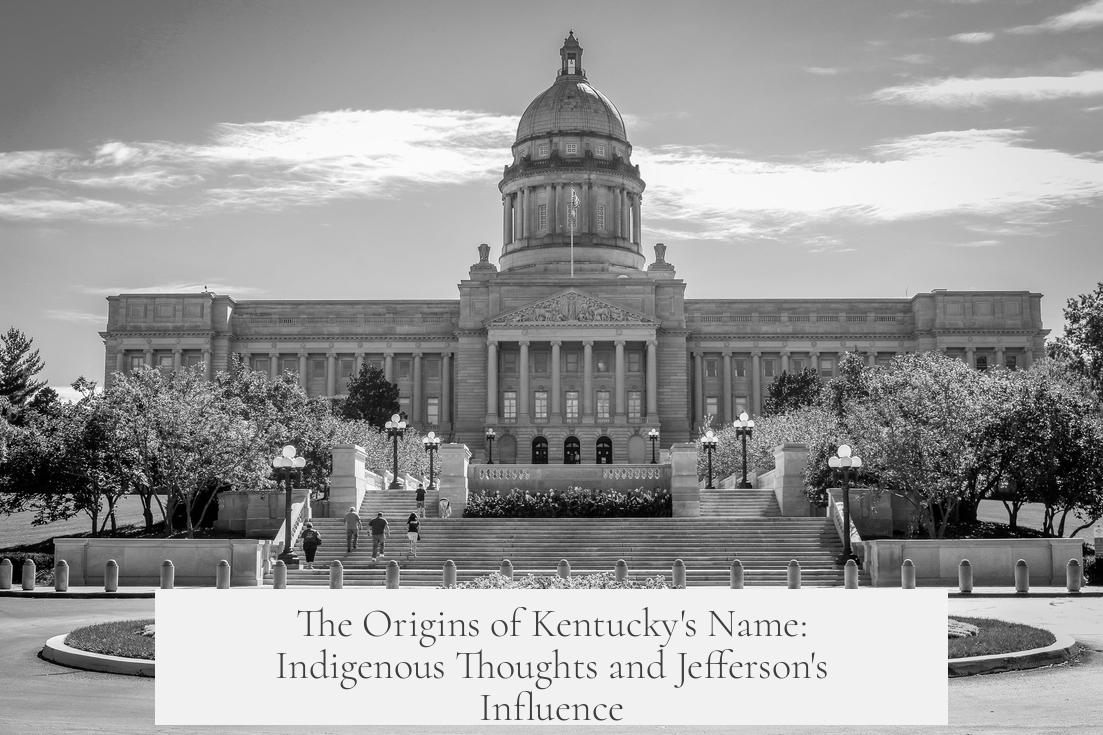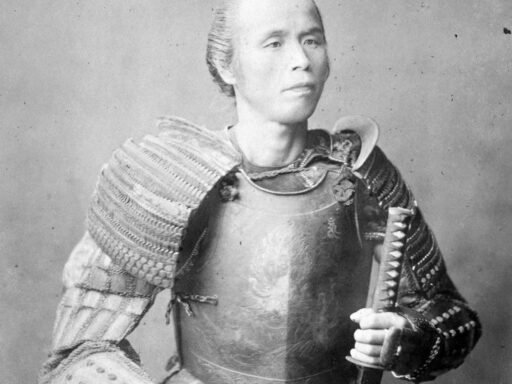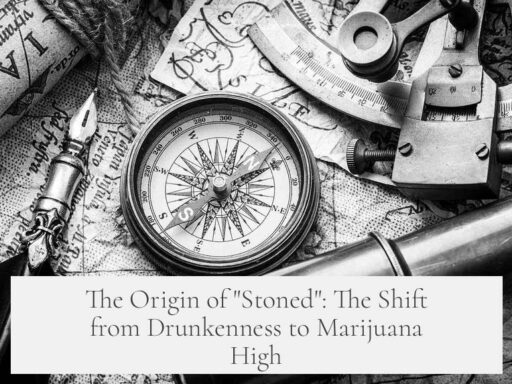The name “Kentucky” originates from Native American languages, most likely the Iroquois word “Kentake,” which means meadow or prairie. The name was officially assigned by the Virginia General Assembly in 1776, with Thomas Jefferson playing a key role in legislating the county’s division and naming.

Kentucky’s name first appears rooted in Indigenous languages. Scholars generally agree the word “Kentucky” comes from the Iroquois term “Kentake.” This word translates roughly to “meadow” or “prairie.” Another related term is “Kuttaawaa,” meaning hunting grounds or wilderness. The modern town of Kuttawa in Kentucky reflects this origin. Despite some variation, “Kentucke” became the Accepted native-inspired name.
The exact origin is not 100% certain, as no definitive contemporary record clarifies which indigenous tribe coined the term. However, historical consensus favors the Iroquois connection given linguistic similarities and regional historic presence. The naming reflects the landscape’s characteristics, emphasizing wide, open fields and a hunting-friendly environment.

Fast forward to colonial America, when Kentucky was a western frontier of Virginia. The Virginia General Assembly formally named the area when dividing the large County of Fincastle into smaller administrative units. This act occurred on December 6, 1776, amid early American governance structuring during the Revolutionary era.
Thomas Jefferson, representing Albemarle County, took an active role in the bill proposing this division. Initially drafted in October 1776, the bill sought to make governance easier for distant inhabitants by breaking the hard-to-manage Fincastle County into three.
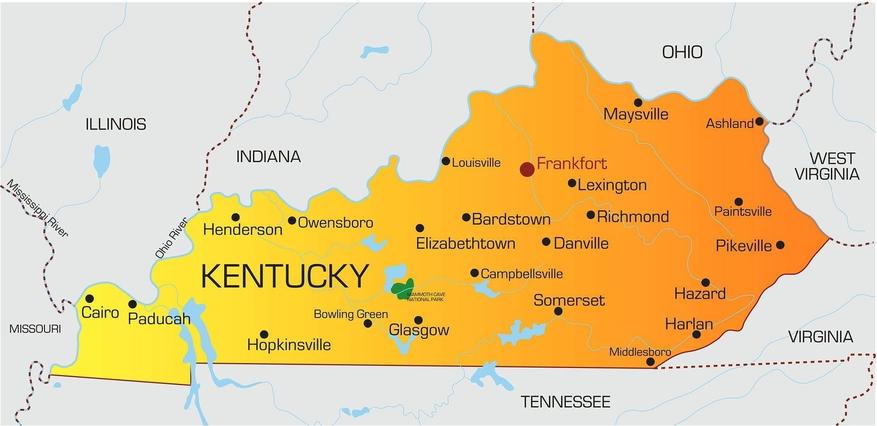
| New Counties Created | Boundaries Described | Assigned Names |
|---|---|---|
| Southern and Western Part of Fincastle | From Ohio at Great Sandy Creek, through Laurel Ridge/Cumberland Mountain, to North Carolina line. | Kentuckey |
| Area northeast of Cumberland Mountain | Along Carolina line and Iron Mountain, including highlands dividing Tennessee and Kanhawa waters. | Washington |
| Remaining northern portion | Residue of Fincastle County | Montgomery |
The spelling “Kentuckey” appears in the official bill text. Later, the spelling settled into “Kentucky,” as is common with historical English spellings adopting phonetic forms over time.
Jefferson did not work alone. The committee to draft and review the bill also included delegates from Botetourt, Augusta, Fincastle, Frederick, Bedford, Hampshire counties. His handwriting appears in the original document margins and blank spaces. This shows his detailed involvement in finalizing the legislation.

The compromise made sense from a logistical perspective: settlers west of the Appalachian Mountains needed localized government to address their specific challenges, such as defense and land claims.
In short, the name Kentucky integrates Indigenous linguistic heritage and colonial administrative actions. The Native American root illustrates the region’s geography, while the Virginia General Assembly’s 1776 bill under Jefferson’s influence made the name official in the American political landscape.

- Kentucky derives from an Iroquois word meaning meadow or prairie.
- The Virginia General Assembly officially named the area as a county on Dec 6, 1776.
- Thomas Jefferson, as a delegate, played a major role in the bill’s creation and passage.
- The bill divided Fincastle County into three: Kentucky, Washington, and Montgomery counties.
- The name reflects Indigenous influence on American place-naming and early colonial governance.
Who Came Up with the Name of Kentucky?
If you ever wondered who named Kentucky, the answer is a blend of Native American heritage and early American legislative action—specifically involving a young Thomas Jefferson. Let’s embark on this journey to uncover the roots of Kentucky’s name, from indigenous words to political paperwork.

First, it’s crucial to understand that Kentucky’s name did not emerge purely from colonial bureaucracy. Instead, it carries echoes of indigenous languages, carrying meaning and mystery from long before European settlers arrived.
The Indigenous Brainstorm: Kentucky’s Early Name Origins
The story begins with the Iroquois people. They likely coined a word sounding like Kentake. This word roughly means “meadow” or “prairie.” Imagine the lush, open fields stretching across the land—that’s what they saw. Another term they used was Kuttaawaa, which leaned more toward “hunting grounds” or “wilderness.” Interestingly, a place in Kentucky today is named Kuttawa, directly reflecting that origin.
Over time, “Kentucke” or “Kentucky” became the adopted form, though no one can point to with absolute certainty which word is the direct source. Historians favor the Iroquois link because it has held up well and fits the geography and the cultural footprint.
Just picture early settlers trekking into vast meadows with names already existing — some meaning “prairie,” some “hunting ground.” Names, after all, often grow from what people experience on the land.
Now, Enter the Virginia Assembly and Thomas Jefferson
But where do American politicians come in? Kentucky wasn’t just a wild patch of prairie anymore. It fell under Virginia’s jurisdiction, specifically within a massive region called Fincastle County. Now, keep this in mind: Fincastle was enormous. So, on December 6, 1776, the Virginia General Assembly decided it was high time to divide it.
A delegate from Albemarle County made the call. Guess who? It was none other than a youthful Thomas Jefferson, who had yet to become President but was already shaping history. Jefferson, along with colleagues like Mr. Simms and Mr. Bullitt, spearheaded this bill. They aimed to carve Fincastle into three manageable counties.
One slice, covering land south and west from the Ohio River, was named Kentuckey—the spelling in the bill. The other two became Washington County and Montgomery County.
This decision was no casual remark. The bill cites that the vastness of Fincastle caused “many inconveniences” to residents far from the courthouse, and they petitioned for change. Naming was part of giving identity and order to the place.
Thomas Jefferson’s Mark: More than Just a Signature
Jefferson was not just a name-drop. The original bill draft predated the committee work, but revisions, margin notes, and filled blanks are all in Jefferson’s handwriting. This shows deep involvement, not just token participation.
The committee also included other Virginia delegates, but Jefferson’s pen left marks that shaped how Kentucky was recognized officially.
What Does This Mean for Kentucky’s Name?
The name Kentucky is a fusion of native language and colonial governance. It reflects place and people, indigenous roots and American statecraft.
Names like Kentucky often carry layered meanings. They reveal a history richer than just dates on a calendar or lines on a map. They speak to how cultures interacted and how the early U.S. organized itself geographically during the revolutionary period.
Why Should You Care?
- Understanding the origin helps appreciate the land’s deep history beyond modern political borders.
- It highlights how indigenous culture still influences everyday American life—even place names.
- Knowing Jefferson’s role adds flavor to the story, linking local history to national figures.
Next time you hear “Kentucky,” remember it means “prairie” or “hunting ground,” named during a busy legislative session by Jefferson and friends aiming to improve life for frontier settlers.
So, who *came up* with the name? It was originally the Iroquois word, adopted and adapted by European settlers, and finally made official by the Virginia General Assembly’s December 6, 1776 bill, heavily influenced by Thomas Jefferson’s pen.
Kentucky’s name embodies a blend of indigenous heritage and early American state-building—a fitting symbol for a state rich in natural beauty and deep history.
Who first used the name Kentucky?
The name Kentucky likely comes from the Iroquois word “Kentake,” meaning meadow or prairie. It was also linked to “Kuttaawaa,” meaning hunting grounds or wilderness. The exact origin remains uncertain but these Native American terms are widely accepted.
Who officially named Kentucky as a county?
The Virginia General Assembly officially named Kentucky as a distinct county. The naming occurred in a bill passed on December 6, 1776, which divided the large Fincastle County into three smaller counties, including Kentucky.
What was Thomas Jefferson’s role in naming Kentucky?
Thomas Jefferson, a delegate from Albemarle County, was on the committee that authored the bill dividing Fincastle County. He made significant revisions to the original draft, showing his heavy involvement in naming Kentucky.
Why was the county of Fincastle divided to create Kentucky?
Residents of the distant parts of Fincastle County faced inconvenience due to their remote distance from the county courthouse. This led to petitions and eventually the county was divided for better governance.
What other counties were created alongside Kentucky in 1776?
Besides Kentucky, the bill divided Fincastle into Washington County and Montgomery County. Each was defined by specific geographic boundaries to help organize the area’s governance.
